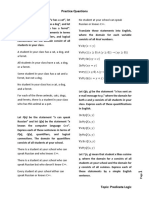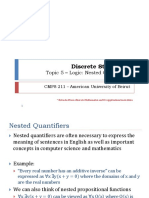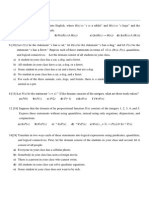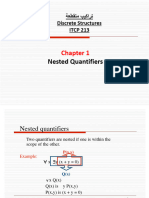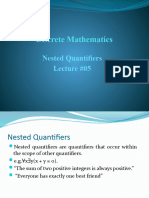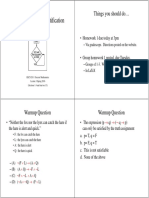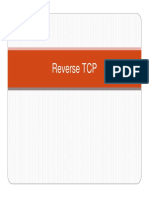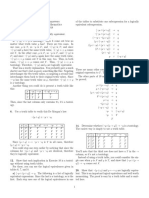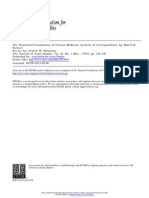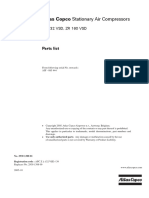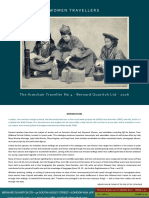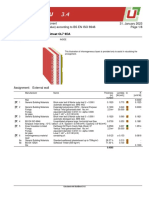0% found this document useful (0 votes)
161 views2 pagesNested Quantifiers in Discrete Math
This document discusses nested quantifiers and provides examples of expressing statements using quantifiers with predicates over various domains. Some key points:
- Nested quantifiers are quantifiers within the scope of other quantifiers, like ∀x∃yP(x,y). Order matters between quantifiers.
- Examples show translating English statements to quantifier expressions, like "Everybody loves somebody" to ∀x∃yL(x,y)
- Problems ask to express additional statements over student websites visited or email/calls between classmates.
- One section asks to rewrite quantifier statements so that negations only appear in predicates using De Morgan's laws.
Uploaded by
QuangHuyĐoànCopyright
© © All Rights Reserved
We take content rights seriously. If you suspect this is your content, claim it here.
Available Formats
Download as PDF, TXT or read online on Scribd
0% found this document useful (0 votes)
161 views2 pagesNested Quantifiers in Discrete Math
This document discusses nested quantifiers and provides examples of expressing statements using quantifiers with predicates over various domains. Some key points:
- Nested quantifiers are quantifiers within the scope of other quantifiers, like ∀x∃yP(x,y). Order matters between quantifiers.
- Examples show translating English statements to quantifier expressions, like "Everybody loves somebody" to ∀x∃yL(x,y)
- Problems ask to express additional statements over student websites visited or email/calls between classmates.
- One section asks to rewrite quantifier statements so that negations only appear in predicates using De Morgan's laws.
Uploaded by
QuangHuyĐoànCopyright
© © All Rights Reserved
We take content rights seriously. If you suspect this is your content, claim it here.
Available Formats
Download as PDF, TXT or read online on Scribd
/ 2








